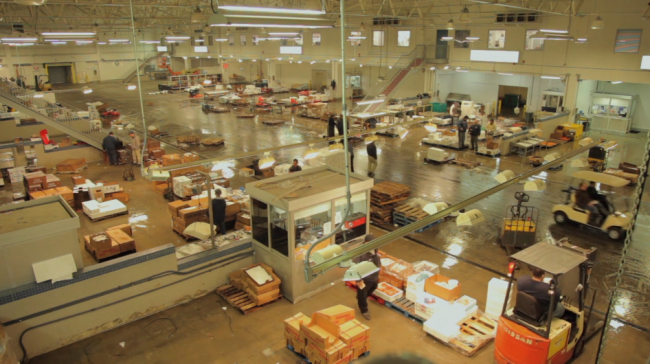
We are celebrating 15 years — and counting — of stories that are deeply researched and deeply felt, that build a historical record of what the city has been.
We are celebrating 15 years — and counting — of stories that are deeply researched and deeply felt, that build a historical record of what the city has been.
To mark the fifth anniversary of the launch of Urban Omnibus, we look at themes that have emerged in our content over time and think about what those threads reveal about the needs, desires, and priorities of the city today.
An expansive and diverse food culture is one of New York’s greatest assets and attractions. Cuisines and foods from nearly every part of the world — and with some recent “green” encouragement, from New Yorkers’ own backyards — are consumed and celebrated here. In accordance with its profound importance to every city dweller, food — its production, distribution, preparation, and consumption — has served as a frequent lens for many of our projects, field trips, and writers.
Five years ago, Urban Omnibus’ first feature, a video in five parts, documented the urban agriculture movement in East New York, looking at how community groups systematically organized a loose constellation of Greenthumb Gardens into the city’s most productive market for hyper-locally grown food. Since then, we’ve visited a good many other food markets and street vendors—from Manhattan’s Lower East Side to Corona in Queens—and, more generally, covered initiatives like Five Borough Farm’s effort to bring a citywide, comprehensive urban agriculture plan to New York City.
For other writers, the complex cultural implications of what is consumed (and by whom) have offered intimate and substantive modes of exploring the city. Whether this has meant tastings of rice noodles and tacos, varieties of ricotta, or hot sopressata, is merely a matter of personal preference.
Some of the most surprising and fascinating features about food and food systems on Urban Omnibus are not about how or where a product is grown, or what it tastes like, but the staggering, complex infrastructure, which “supplies, processes, distributes, stores, and removes the waste of what we eat,” to quote a memorable interview with Nicola Twilley and Sarah Rich about their Foodprint Project. Making visible this sprawling, de-localized, or simply difficult to access infrastructure of New York’s food supply chain has been a persistent goal—the history and future of the region’s freight rail system and a formerly endangered produce distribution center are just two examples.
Ultimately, the ideas and perspectives taken here on food and its impact on the built environment are as diverse as the meals you might have in the city’s five boroughs. Food has been an instructive force. As has been written here before, “food is an incredibly powerful tool for connecting seemingly disparate issues…It is a magical lens that allows you to see the landscape in a different way.”

Hunts Point Food Distribution Center | Still from Archipelago, an Urban Omnibus-produced film.
The views expressed here are those of the authors only and do not reflect the position of The Architectural League of New York.
Comments